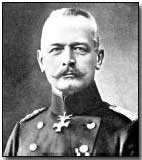Encyclopedia - Race to the Sea
 The 'Race to the Sea', as
it subsequently - and somewhat inaccurately - became known, and which was
conducted from September-November 1914, ended with the onset of
trench
warfare in the Western Front.
The 'Race to the Sea', as
it subsequently - and somewhat inaccurately - became known, and which was
conducted from September-November 1914, ended with the onset of
trench
warfare in the Western Front.
In fact the Race to the Sea comprised what was the last mobile phase of the war on the Western Front until the German Spring Offensive of March 1918. Allied attempts to force an extensive German retreat in the wake of the September battles of the Marne and Aisne ultimately failed as German defenders firmly dug in behind formidably prepared trench lines.
In consequence both sides, most notably the Germans, attempted to gain an advantage by pressing their attacks further north in Flanders, the only open flank remaining open for manoeuvre, each constantly striving to outmanoeuvre the other. However all such attempts - including the first German-led Battle of Ypres - were thwarted as each side consistently dug in and prepared effective trench defences.
Once the trench lines had reached the the coast, the Allies defending against fierce German attacks plotted by newly-installed Chief of Staff Erich Falkenhayn much of the way, focus switched to the opposite direction all the way to the (neutral) Swiss border, some 400 miles in length. During this earlier period control of the Channel coast was deemed a genuine strategic priority, thus in part justifying the tag 'Race to the Sea'; ultimately however both sides found themselves in possession of given Channel ports.
Deemed something of a draw by the close of November each side settled down to a protracted bout of trench warfare, punctuated at various points by concerted attempts - largely Allied - to decisively puncture the enemy line (as at the Somme, the Aisne and Passchendaele).
Panzer was a term used to describe a German tank.
- Did you know?
